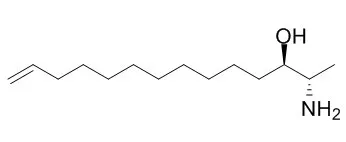A wide range of sessile and sedentary marine invertebrates synthesize secondary metabolites that have potential as industrial antifoulants. These antifoulants tend to differ in structure, even between closely related species.
METHODS AND RESULTS:
Here, we determine if structurally divergent secondary metabolites produced within two sympatric haliclonid demosponges have similar effects on the larvae of a wide range of benthic competitors and potential fouling metazoans (ascidians, molluscs, bryozoans, polychaetes, and sponges). The sponges Haliclona sp. 628 and sp. 1031 synthesize the tetracyclic alkaloid, haliclonacyclamine A (HA), and the long chain alkyl amino alcohol, Halaminol A (LA), respectively. Despite structural differences, HA and LA have identical effects on phylogenetically disparate ascidian larvae, inducing rapid larval settlement but preventing subsequent metamorphosis at precisely the same stage. HA and LA also have similar effects on sponge, polychaete, gastropod and bryozoan larvae, inhibiting both settlement and metamorphosis. Despite having identical roles in preventing fouling and colonisation, HA and LA differentially affect the physiology of cultured HeLa human cells, indicating they have different molecular targets.
CONCLUSIONS:
From these data, we infer that the secondary metabolites within marine sponges may emerge by varying evolutionary and biosynthetic trajectories that converge on specific ecological roles. |






 Cell. 2018 Jan 11;172(1-2):249-261.e12. doi: 10.1016/j.cell.2017.12.019.IF=36.216(2019)
Cell. 2018 Jan 11;172(1-2):249-261.e12. doi: 10.1016/j.cell.2017.12.019.IF=36.216(2019) Cell Metab. 2020 Mar 3;31(3):534-548.e5. doi: 10.1016/j.cmet.2020.01.002.IF=22.415(2019)
Cell Metab. 2020 Mar 3;31(3):534-548.e5. doi: 10.1016/j.cmet.2020.01.002.IF=22.415(2019) Mol Cell. 2017 Nov 16;68(4):673-685.e6. doi: 10.1016/j.molcel.2017.10.022.IF=14.548(2019)
Mol Cell. 2017 Nov 16;68(4):673-685.e6. doi: 10.1016/j.molcel.2017.10.022.IF=14.548(2019)